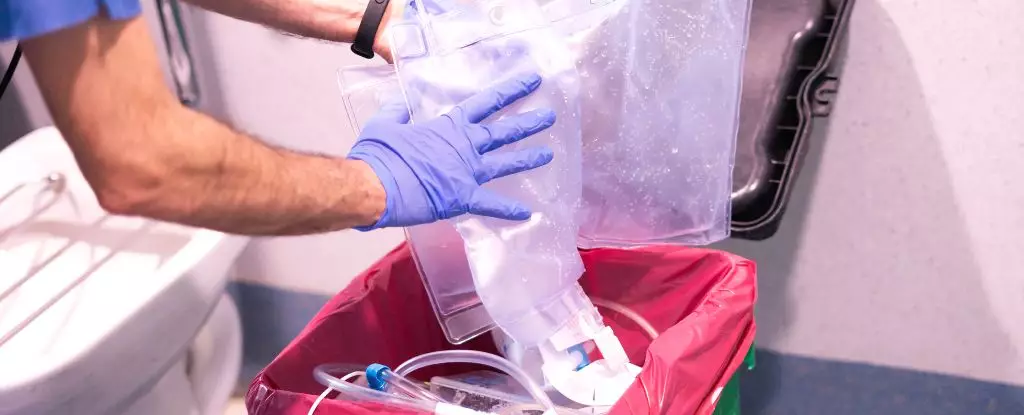As we navigate through the 21st century, plastic pollution has emerged as an enormous environmental crisis, with detrimental effects on marine life, ecosystems, and human health. The stark reality of plastic debris suffocating our oceans is something scientists can no longer ignore. The staggering volumes of plastics accumulating in landfills are indicative of our culture’s overreliance on this versatile material. Yet, just when it seems the weight of plastic pollution is insurmountable, new research explores an unexpected glimmer of hope through microbial innovation.
Microbial Allies in the Fight Against Plastic Waste
Microbiologists have recently unearthed promising revelations about certain strains of bacteria that possess the extraordinary ability to break down plastic compounds. This intriguing potential for “plastic-eating” microbes could revolutionize our approach to plastic waste management. While the notion of harnessing nature’s minute organisms to mend environmental wrongs is intoxicating, there are complexities that beckon deeper investigation. A critical concern is the unknown implications of introducing these bacteria into various ecosystems, particularly where they might disturb the natural balance or exacerbate existing microbial threats.
The Dual Nature of Microbial Action
A curious twist emerges when we delve into the connection between these plastic-degrading microbes and human health—specifically within hospital environments. Hospitals employ various plastics for critical applications such as sutures, dressings, and implants, raising the unsettling question: could resident pathogens in these settings also be breaking down these plastics? The exploration begins with the bacterium Pseudomonas aeruginosa. Known for its resilience and prevalence in healthcare-associated infections—with nearly 559,000 related deaths globally each year—this pathogen has significant implications for patient safety.
An alarming study reveals that P. aeruginosa may be equipped with genetic tools enabling it to decompose plastic. Initially identified in samples from infected patients, particular strains exhibited an uncanny ability to metabolize plastic as a carbon source, thanks to an enzyme dubbed Pap1. This capability transforms the bacterium from merely a threat to a possible, albeit precarious, ally in managing plastic pollution.
Stronger Together: Biofilms and Plastic
The implications of P. aeruginosa’s ability to feed on plastics cannot be underestimated. Biofilm formation—where bacteria adhere to surfaces and build protective matrices—adds another layer of complexity to this situation. Research suggests that while environmental variants of the same bacterium can effectively degrade plastic, P. aeruginosa can utilize its plastic-degrading prowess to enhance its biofilm structure. This means that rather than combating its pathogenicity, the breakdown of plastic may fortify the biofilm, enabling greater resistance against antibiotics and the human immune system.
The unsettling reality is that this phenomenon may contribute to a lasting presence of pathogens within hospitals. As these bacteria flourish in environments abundant in plastic, the risk of infection surges, complicating treatment protocols and endangering patients. One could argue that this serves as a conceptual paradox: microbes that have the potential to alleviate plastic pollution simultaneously pose formidable challenges in healthcare settings.
Possible Solutions Amidst a Growing Problem
Recognizing this duality prompts a pressing need for innovative solutions. Researchers are actively investigating strategies to incorporate antimicrobial substances into medical plastics to inhibit microbial growth and ensure patient safety. While these advancements may pave the way for safer applications of plastics in medicine, they must be approached with caution. The introduction of antimicrobial agents can bring about unforeseen repercussions, including the emergence of resistant bacterial strains.
Furthermore, the materials selected for future medical use require diligent consideration. With the acknowledgment that some pathogenic bacteria can thrive by degrading plastics, a reevaluation of our hospital practices and material choices could be a frontline defense.
As we wrestle with the paradox of microbial potential, it is crucial to balance innovation with caution. The road forward demands a multidisciplinary approach that intertwines environmental science, medicine, and ethics, shaping a future where microbial allies do not compromise public health while simultaneously leading us out of our plastic woes. Thus, the narrative surrounding plastic-eating microbes should not simply celebrate their potential but critically assess their role within the broader ecological and medical tapestry.


Leave a Reply